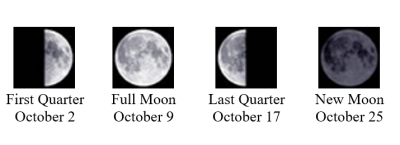Don’t Fall for the Headlines of Meteors Crashing Into Earth
Opinion Advocates for ideas and draws conclusions based on the author/producer’s interpretation of facts and data.
 By Scott Levine
By Scott Levine
A friend grabbed me a few weeks ago to ask about a headline he saw saying an asteroid the size of the Empire State Building was heading our way. Run for your lives!
These headlines, which stop just short of hoaxes, appear out of thin air any time there’s a slow news day, it seems. Unsurprisingly, that asteroid, like all the others on these click-bait articles, glided by with no catastrophes.
What the headlines always seem to leave out is, while the meteors are certainly heading our way, they’re heading our way millions of miles off in space, far, far beyond the orbit of the moon. These objects are everywhere in space, and generally have no business with us, but there is a certain connection they give us to the solar system.
Mixed in among all the planets, moons, asteroids (not only skyscraper-sized) and other solar system objects is some leftover junk that either never managed to get pulled into something larger, or it was kicked off when a couple of bigger things crashed into each other.
We use the word meteoroid to describe objects that orbit the sun and sometimes cross Earth’s orbit. When Earth runs into them, some burn up high in our atmosphere and streak across the sky. We call these meteors. If a meteor manages to survive the trip through our atmosphere and makes it to the ground, we call it a meteorite.
 Small meteors often stumble across Earth. In fact, somewhere between 18,000 and 84,000 meteors heavier than 10 grams hit Earth each year. Many of the ones we see are even smaller, just the size of a grain of sand.
Small meteors often stumble across Earth. In fact, somewhere between 18,000 and 84,000 meteors heavier than 10 grams hit Earth each year. Many of the ones we see are even smaller, just the size of a grain of sand.
We usually give most of our thought to meteors around the times of meteor showers, when Earth, as it travels through its orbit, plows through patches of meteoroids, usually of the broke-off-from-passing-comets variety.
The last few months of the year are a busy time for these showers. There are six in October alone, including the understated Southern Taurids, which peak Oct. 10. In November, come the famous Leonid meteors, which peak Nov. 17. The year’s last major shower, the Geminids, peaks Dec. 14.
I don’t write much about meteor showers because they tend to be a little finicky. They’re usually at their best very early in the morning, but not too early, and there’s always a gamble that the moon or clouds will get in the way of the whole thing. Sometimes sitting outside at 2 a.m. on a January morning isn’t as fun as it sounds. On the other hand, with this fragility come chances for truly spectacular showers, with what feels like an endless run of meteors streaking high above.
While showers vary from one year to the next, the time of year when we see them is very predictable because our orbit is predictable. We return to the same place in space relative to the sun every year at the same time. When we come back, these pockets of meteoroids are still there waiting, still orbiting the sun just like we are.
With a little patience, some warm clothes and a little coffee, too, meteor showers are certainly worth giving a try – and just laugh at those headlines. Clear skies!
Scott Levine (astroscott@yahoo.com) is an astronomy writer and speaker from Croton-on-Hudson. He is also a member of Westchester Amateur Astronomers, a group dedicated to astronomy outreach in our area. For information about the club including membership, newsletters, upcoming meetings and lectures at Pace University and star parties at Ward Pound Ridge Reservation, visit www.westchesterastronomers.org.

Examiner Media – Keeping you informed with professionally-reported local news, features, and sports coverage.
